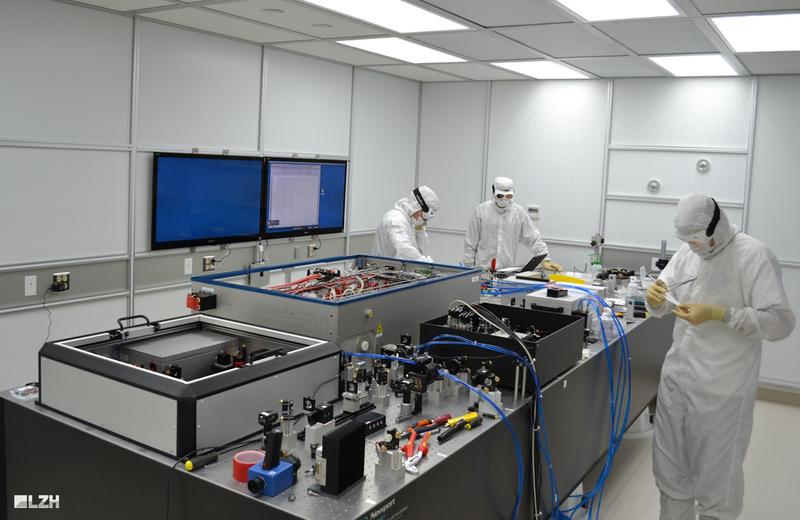
Gravitational Waves Detected: LZH’s Laser System Breakthrough

Installation of the LZH lasers in the LIGO cleanroom, Livingston (US).
LZH
The resulting gravitational wave was measured already in September 2015; yesterday, the evaluation of the data was published in the Physical Review Letters and presented to the world press.
For more than ten years, the AEI and the Laser Zentrum Hannover e.V. (LZH) have put R&D efforts into the development of laser systems for the LIGO (Laser Interferometer Gravitational Wave Observatory) gravitational wave detectors.
The lasers of the LIGO detectors were jointly manufactured and integrated into the US observatories as a ready-to-run system by the LZH, the AEI and the LZH spin-off company neoLASE. The gravitational wave detected now was recorded by the Enhance LIGO (eLIGO) model.
The Advanced LIGO (aLIGO) systems that were put into operation in the meantime have a five times higher output power compared to the previous lasers. Under these circumstances, chances to detect further gravitational waves are significantly higher.
With this high-tech measurement instrument, a reliable basis was created for future research in gravitational physics in Hannover and worldwide.
AEI press release: www.aei.mpg.de/gwdetection
LIGO press release: www.ligo.org/news/media-advisory.php
http://www.lzh.de/en/publications/pressreleases/2012/anotherhighpowerlaserforthe…












